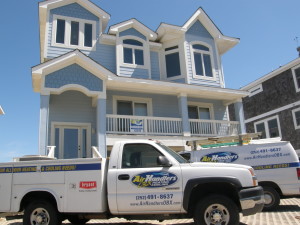We rely on our heating and cooling system to keep us comfortable year round. When this system doesn’t work properly, it can be uncomfortable and expensive as energy bills begin to rise. The thermostat is a common cause of HVAC system problems.
The thermostat is responsible for turning your heating and cooling system on and off. It works by monitoring the air temperature in your home. It signals the HVAC system to heat or cool your home when temperatures reach above or below the temperature set on the thermostat.
When your thermostat isn’t working properly, it can affect the efficiency of your system. The following thermostat problems can be fixed quickly and easily at home. If you’re still experiencing problems after checking the following, it might be necessary to replace your thermostat.
Lack of Temperature Control
One common problem is when the thermostat reads one temperature but the homeowner is positive the actual room temperature is different. In order to get an accurate reading, your thermostat needs to be clean, flush with the wall and located in an area free from drafts or other factors that can affect its ability to read temperatures.
Make sure your thermostat is installed five feet from the floor, away from corners, doors, windows and heat sources. Moving a thermostat can be difficult. It might be best to enlist the help of a qualified HVAC technician.
If your thermostat is in a good location, you will need to check for dirt and corrosion. Turn off the HVAC system and remove the cover of the thermostat. Use a soft rag, brush or vacuum attachment to remove any dust and debris. Corrosion can sometimes be removed with an electronic contact cleaner. Outdated thermostats should be replaced.
Abrupt Changes in Temperature
Extreme changes to the temperature of your home, or a furnace that turns on and off too frequently is typically due to the thermostat’s heat-anticipator setting. Remove the cover of the thermostat and look for a small lever that moves along a calibrated scale. The top of this scale is often marked with “longer”.
Adjust the heat-anticipator lever up (towards longer) if the furnace is turning on and off too frequently, and down if you are experiencing extreme temperature changes. These adjustments can take hours to stabilize and you might need to try several different settings until you find the right one.
If you are positive that your thermostat is programmed properly, you should to check the batteries. Low power can cause the thermostat to act up.
Please contact us for information about replacement and repair of your thermostat.



